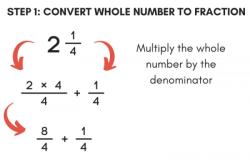How to calculate the angles and sides of a triangle?
To calculate the angles and sides of a triangle, you can use various mathematical principles and formulas depending on the information you have about the triangle. The following methods explain how to do so:
1. Using the Law of Sines:
- If you know two angles and one side, or two sides and one non-included angle (SAS or ASA), you can use the Law of Sines.
- The Law of Sines states: (a/sin A) = (b/sin B) = (c/sin C), where a, b, and c are the side lengths, and A, B, and C are the opposite angles.
- Rearrange the formula to find the unknown side or angle. For example, to find angle A, you can use: sin A = (a/side b) * sin B.
2. Using the Law of Cosines:
- If you know two sides and the included angle (SAS), you can use the Law of Cosines.
- The Law of Cosines states: c² = a² + b² - 2ab * cos C, where a, b, and c are side lengths, and C is the angle between sides a and b.
- Rearrange the formula to find the unknown side or angle. For example, to find angle C, you can use: cos C = (a² + b² - c²) / (2ab).
3. Using the Pythagorean Theorem:
- For a right triangle (one angle is 90 degrees), you can use the Pythagorean Theorem.
- The Pythagorean Theorem states: a² + b² = c², where a and b are the lengths of the two shorter sides (legs), and c is the length of the longest side (hypotenuse).
4. Using Trigonometric Ratios:
- For a right triangle, you can use trigonometric ratios (sine, cosine, and tangent) to find angles or sides.
- For example, if you know one angle and one side in a right triangle, you can use the sine, cosine, or tangent functions to find the other angle or side.
5. Using Special Right Triangles:
- Special right triangles, like 30-60-90 and 45-45-90 triangles, have specific side length ratios that you can use to find missing sides.
- For a 30-60-90 triangle, the sides are in the ratio 1:√3:2. For a 45-45-90 triangle, the sides are in the ratio 1:1:√2.
6. Using the Angle Sum Property:
- The sum of the angles in any triangle is always 180 degrees. So, if you know two angles in a triangle, you can find the third by subtracting the sum of the known angles from 180 degrees.
7. Using the Law of Tangents:
- The Law of Tangents can be used to solve oblique triangles (triangles that are not right triangles) when you have enough information.
- The formula for the Law of Tangents depends on the known side and angles and may require more advanced calculations.
When solving for angles and sides in a triangle, it's crucial to have sufficient information (e.g., side lengths, angles, right angles) and choose the appropriate method or formula based on the given data and the type of triangle you're dealing with.
Triangle Angle and Side Calculation: A Comprehensive Guide
To calculate the angles and sides of a triangle, you can use a variety of methods, depending on the information you have. Some of the most common methods include:
- The Pythagorean Theorem: The Pythagorean Theorem states that in a right triangle, the square of the hypotenuse is equal to the sum of the squares of the other two sides. This theorem can be used to calculate the length of any side of a right triangle, given the lengths of the other two sides.
- Trigonometry: Trigonometry is a branch of mathematics that deals with the relationships between the sides and angles of triangles. Trigonometric functions, such as sine, cosine, and tangent, can be used to calculate the angles and sides of any triangle, given enough information.
- The Law of Sines and the Law of Cosines: The Law of Sines and the Law of Cosines are two mathematical laws that can be used to calculate the angles and sides of any triangle. These laws are especially useful for calculating the angles and sides of non-right triangles.
Using Trigonometry to Determine Triangle Angles and Sides
Trigonometry is a powerful tool for determining triangle angles and sides. To use trigonometry to calculate the angles and sides of a triangle, you need to know the following:
- The type of triangle (right, acute, obtuse, or equilateral)
- The length of at least one side of the triangle
- The measure of at least one angle of the triangle
Once you have this information, you can use the appropriate trigonometric function to calculate the other angles and sides of the triangle.
For example, if you have a right triangle with a hypotenuse of 10 cm and one leg of 6 cm, you can use the sine function to calculate the measure of the acute angle opposite the 6 cm leg. The sine of the angle is equal to the opposite side over the hypotenuse, so the sine of the angle is 6/10 = 0.6. Using the inverse sine function, you can calculate that the measure of the angle is approximately 37 degrees.
The Law of Sines and the Law of Cosines in Triangle Calculations
The Law of Sines and the Law of Cosines are two mathematical laws that can be used to calculate the angles and sides of any triangle. These laws are especially useful for calculating the angles and sides of non-right triangles.
The Law of Sines states that in any triangle, the ratio of the length of a side to the sine of its opposite angle is a constant. This constant is equal to the ratio of the length of any other side of the triangle to the sine of its opposite angle.
The Law of Cosines states that in any triangle, the square of one side is equal to the sum of the squares of the other two sides minus twice the product of those two sides times the cosine of the angle between them.
These laws can be used to solve a variety of triangle problems. For example, if you have a triangle with two sides and one angle of the triangle, you can use the Law of Sines to calculate the third side of the triangle. Or, if you have a triangle with all three sides, you can use the Law of Cosines to calculate the angles of the triangle.
Problem-Solving Strategies for Various Types of Triangles
Depending on the type of triangle you have, you can use different problem-solving strategies to calculate the angles and sides of the triangle.
For right triangles, you can use the Pythagorean Theorem to calculate the length of any side of the triangle, given the lengths of the other two sides. You can also use trigonometric functions to calculate the angles and sides of a right triangle, given enough information.
For non-right triangles, you can use the Law of Sines and the Law of Cosines to calculate the angles and sides of the triangle. You can also use trigonometric functions to calculate the angles and sides of a non-right triangle, given enough information.
Real-World Scenarios Requiring Triangle Angle and Side Calculations
Triangle angle and side calculations are used in a variety of real-world scenarios, such as:
- Surveying: Surveyors use triangle angle and side calculations to measure the distances between points on a map.
- Construction: Construction workers use triangle angle and side calculations to design and build structures, such as bridges and buildings.
- Navigation: Navigators use triangle angle and side calculations to determine their location and to plan their course.
- Astronomy: Astronomers use triangle angle and side calculations to measure the distances between stars and planets.
Triangle angle and side calculations are an important part of many different fields. By understanding the different methods for calculating triangle angles and sides, you can solve a variety of problems in the real world.











